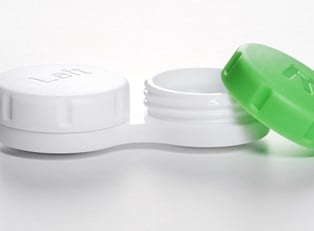With so many brands and styles to choose from, buying glasses or contacts can quickly escalate from a simple purchase to a major headache. Below are five great tips for making your corrective-lens purchase much easier.
-
Buy them online.
Buying glasses and contacts online will normally be much cheaper than buying them in person from your optometrist, and as long as you have a current prescription, you shouldn’t have any problems obtaining them. A word of caution, though—it’s best to stick with established, well-known websites and brands, or you may find yourself with an inferior product. This is especially important to remember when purchasing contacts, because buying poorly made ones can cause serious injury to your eyes.
-
Expect an adjustment period.
If you’re wearing contacts or glasses for the first time or your prescription has recently increased, you shouldn’t expect them to feel natural immediately. In instances like these, you may think your prescription is wrong and be tempted to return them. However, it’s best to give your eyes a couple days to adjust before making any final decisions. This will ensure you don’t have to make any extra trips or potentially spend more money on returns.
-
Get eye exams regularly.
It may sound surprising, but the prescription for your glasses or contacts can change—sometimes dramatically—over the course of just a few months. Without regular eye exams you won’t be able to catch those changes, and you could potentially be buy glasses or contacts that aren’t the right strength for your eyes. At minimum, you should get an exam annually, but ideally you should be doing so every six months.
-
Opt for a protection plan.
If you’re purchasing glasses, it’s best to spend a little extra on a protection plan for them. Accidents can happen, and if they do, you’ll probably end up spending more on a replacement pair than you would have on the plan itself. While it will vary from provider to provider, most plans last for one year and cover both defects with the product and user-caused damage.
-
Reuse your frames.
Even though your prescription may have changed, that doesn’t mean you need entirely new frames with your glasses. Instead, have your optometrist simply replace the lenses in your current pair.
-
Consider contact types.
Don’t be afraid to explore contact types while you’re trying to find the pair that’s right for you. The options include monthly, bi-weekly, and daily contact lenses. This refers to how long you can wear them before throwing them away. Monthly and bi-weekly will need to be sterilized for several hours per day before you put them back into your eyes. Daily contact lenses are often one of the most convenient lenses since you get to use a fresh pair every day, and you don’t need to leave them in solution every night. Dailies are especially ideal for someone who knows they won’t wear contacts every day.



